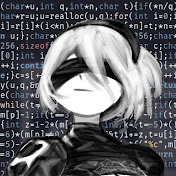I’m considering replacing my Nvidia Shield in the future and plan to build a small TV box as its replacement. I’m curious about what operating systems people typically use for these types of TV-specific devices, as well as which desktop environments are preferred. Is KDE or GNOME better optimized for use on TVs?
There’s Plasma Bigscreen if you’re into the whole KDE experience, specifically for TV usage.
If anyone actually manages to get Plasma Bigscreen working decently, please let me know how you did it. I was really excited when I first learned about it, but after considerable time tinkering, I gave up.
My first attempt was to install it on an old laptop. It boots up and looks good, but a large number of the built-in apps hang forever on their splash screen when you try to run them. I also couldn’t figure out how to customize what apps appear in the carousels on the homepage. I’m not sure if that’s because there truly is no way to do it or if the functionality is locked behind one of the apps that I can’t launch.
The Plasma Bigscreen website indicates that it was designed to run on a Raspberry Pi 4, so I gave in and bought one in hopes that using the preferred hardware would work better. I followed the provided links to the latest Manjaro build of Bigscreen (which is over a year old) and installed it on my pi. Unfortunately, that build apparently suffers from a bug that prevents you from even getting past the login screen on first boot up. I don’t remember the details, but I think it was some kind of “can’t log in without setting a password” / “can’t set a password until you log in” loop. Anyway, I found a forum post discussing the problem with no solutions found, so I gave up on the manjaro build.
My final attempt was to install an ordinary desktop Linux distribution on the pi and then use the package manager to install Plasma Bigscreen as an alternative desktop. This got me in, but there were still a bunch of broken apps. It was about this time that I also realized that the original Bigscreen concept seemed to lean heavily into voice control via Mycroft AI. Mycroft has gone through some major changes since the project launched, and I think these changes have resulted in basically all Mycroft related code in Plasma Bigscreen being broken. That may or may not be related to the other problems I had. I never got to experience a fully functional version of the software, so I have a hard time knowing what exactly is broken in what ways.
Anyway, that’s my experience with Plasma Bigscreen. I hope this doesn’t come across as hating on the project. It should be evident from the amount of effort put in that I really wanted it to work, but in the end I had to conclude that in its current state, it’s badly broken with no sign of improvement or repairs.
Since I was lazy to set up plasma big screen I just have regular arch installed on my old laptop and connected to TV through HDMI.
I don’t have remote device, but with kdeconnect I can control the mouse, keyboard and run commands.
And with browser most web app will work. I don’t have a fancy app lunchers that give the TV vibe, or screensavers.
Am I missing anything?
Oh wow, I’ve always used KDE and love it to bits. Cannot believe i’ve never heard of this haha!
deleted by creator
I have been eyeing it for a while, does anybody know what media playback looks like with this?
I use CoreELEC on an Odroid N2+ and I’m wondering if all the media playback works like 4k60 HEVC, 4k60 VP9 and HDR playback.
I haven’t actually used it either, just came upon it as a possible replacement for Libreelec/Kodi. It looks interesting, but a full Linux DE might be too much for my home theatre needs.
wait what the hell!?😂
oh my gods this is directly from KDE that’s actually so pogged damn🤌🔥
I use Linux mint, then use advanced emulation launcher to launch things that kodi doesn’t have but I want to use, like ESDE. Its a pain to remember custom thing I setup on it but I used to use the official kodi os (before the stopped it quite a few years ago)
I’m mid-point of doing the same thing. So far my narrowed down options are Fedora, Arch, Nobara, and uBlue Bazzite. You need an OS that supports HDR, which means a more cutting edge distribution with either a rolling release cycle like Arch, or a more frequent release cycle like Fedora. Nobara and Bazzite are set up out of the box for gaming and streaming, so those are two likely candidates for you.
@Sunny
Kodi and similar on raspberry since years and I’m pretty happy .
Used since XBMC on an hacked Xbox…What kind of content do you consume ? Do you have a Jellyfin server or do you need to access streaming platforms? Any gaming ?
Mostly Jellyfin and Stremio yeha. Been thinking about getting Sunshine/Moonlight set up but not done it yet.
deleted by creator
There are a few JeOS distros out there, usually built around something like Kodi or Jellyfin. I’ve had good experiences with LibreELEC, which (through Kodi) can do audio and video files, broadcast TV, live streams, VOD channels, and even game emulators if the hardware can handle them. It works well on small devices.
When choosing hardware, beware of the fractional frame rate issue: Lots of TV content has a video frame rate that’s a little bit off from the whole numbers usually expected by computers, like 30000/1001 = 29.97002997 fps instead of 30 fps. Support for these frame rates is missing from a lot of systems-on-chip, so small media boxes that use them will have to fake it by dropping or duplicating frames every so often. The result is not smooth.
All the Raspberry Pi models that I’ve checked do support fractional frame rates, so that would be a pretty safe hardware choice.
I went down the lazy road with OSMC (Kodi) and their Vero 4k+ device to support their great work. Still running strong after 6 years.
I think you added the wrong link? 😅
Right. Thanks for catching it 🙇









